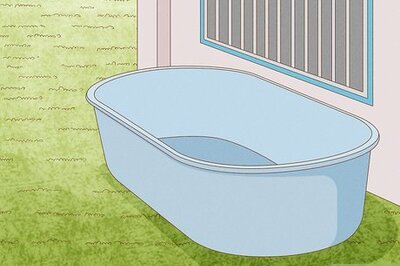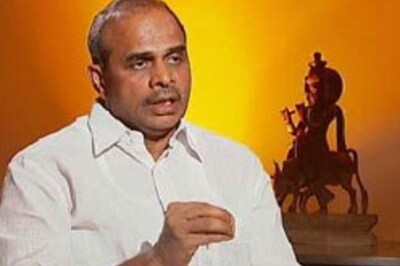
views
New Delhi: India will begin production of an upgraded version of the indigenous Arjun main battle tank (MBT) by early 2014, an official said here Monday.
The Defence Research and Development Organisation (DRDO) is already getting ready with the the Mark-II version of the Arjun for its first summer and winter trials this year.
Among the upgrades, the Mark-II tank would feature an indigenous engine that would replace the existing German engines of the 58-tonne Arjun Mark-I.
The developments come within a year of the government sanctioning the Arjun Mark-II project last May.
"In 24 months from now or early 2014, the Arjun Mark-II tanks will be ready for production," the DRDO official said.
The army has already ordered 248 Arjun Mark-I tanks for induction into its armoured regiments. The first lot of 124 tanks, for which the orders were placed on the Avadi-based Heavy Vehicles Factory (HVF) in 2004 at a cost of Rs 170 million ($4 million) each, have been handed over to the army.
The army is now operating the 124 Arjuns as part of two regiments in the western sector and last May placed an order for an additional 124 tanks, primarily to keep the production line in HVF running, before the Mark-II version is ready for manufacturing.
The army gained confidence in operating the Arjun tanks, despite the initial hesitation, after the first two regiments were pitted against the Russian-built T-90 MBTs early last year in comparative trials in the desert terrain. The Arjuns had outsmarted the T-90s in all the parameters set for the trials and had prompted the army top brass to agree to inducting two more regiments.
The Arjun Mark-II will have about a dozen changes from the first lot, being armed with missile firing capability through a laser homing device. Though this system had been tested on the Mark-I version of the tank about five years ago, it did not form part of the final design of the initial 124 delivered to the army, and nor will it be mounted on the second lot of 124.
The system, they said, would have a range of about eight km, within which it could destroy enemy tanks after homing on to the target using a laser. Other modifications include better explosive-reactive armour for the tank to protect it from enemy missiles and rockets, improving the sighting facility to provide it a wider view of the battlefield, including night vision capability, and a better communication system.
The Arjun Mark-II will have over 90 percent indigenous systems on board, except for some hydraulic and electronic systems.




















Comments
0 comment